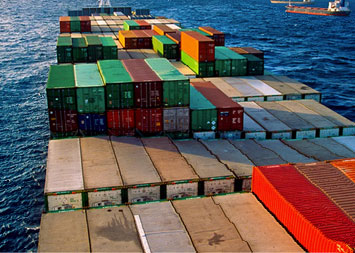A steady rise in the adoption of electronic Bills of Lading (eBL) has been revealed by the results of a 2024 global survey by the International Chamber of Commerce (ICC) and other FIT Alliance co-founders BIMCO, DCSA, FIATA and SWIFT.
Conducted in partnership with the HKUST Li & Fung Supply Chain Institute and the Boston Consulting Group (BCG), the FIT Alliance survey on eBL underlines the importance of greater collaboration across trade supply chain in driving further progress.
Strong momentum in eBL Adoption
Since the first eBL survey in summer 2022, the proportion of user adoption of eBL has steadily increased. The share of dual-format users (those using both paper and electronic bills of lading) has surged from 28.0% in 2022 to 41.7% in 2024. The overall adoption rate—encompassing users of eBLs, exclusively or alongside paper BLs —rose from 33.0% to 49.2%.
In other words, nearly half of respondents now incorporate eBLs in some capacity, and 74.7% of paper-only users plan to transition to eBLs, up from 58.0% in 2022. Within this group, 32.2% intend to adopt within the next two years, compared to 22.0% in 2022.
eBLs: a catalyst for digital transformation
The survey reaffirms that eBLs are widely seen as a cornerstone of trade digitalisation. 94.0% of respondents believe eBLs will unlock broader digital transformation, up from 86.0% in 2022. Respondents highlighted faster processing (94.2%), cost savings through process efficiencies (89.8%), improved data accuracy (87.3%), and enhanced security (89.2%) as key advantages. These benefits illustrate eBLs’ potential to modernise operations and streamline global trade.
Pamela Mar, Managing Director, ICC Digital Standards Initiative said:
“From conversations with businesses on the ground, we know that eBL adoption has been on a clear upward trajectory, and now the data validates it. By addressing challenges in standards, digital trust, and legal reform, the digital transformation of trade becomes inevitable. The future is clear—not just for eBL, but for the digitalisation of financing and commercial processes around it.”
More collaboration needed to bring down adoption barriers
Despite these gains, the survey also highlights challenges that continue to hinder eBL adoption. Technological and platform-related issues remain the most cited barrier, identified by 71.2% of respondents. Stakeholder readiness follows closely, with 61.7% emphasising the need for better preparation and collaboration among supply chain participants. Legal acceptance, while improving, is still flagged by 42.6% of respondents as a significant obstacle, though this marks progress from 55.0% in 2022.
Diverging trends across geographies, sectors, firm sizes
The survey reveals notable disparities in eBL adoption by geography, sector and firm size.
Adoption amongst respondents in Asia is higher than other regions, with 60.2% compared to 45% in Europe and followed closely by South America at 43.8%.
The banking sector, despite having high awareness levels (82.5%), shows low adoption (21.1%), reflecting an apparent hesitancy or difficulty in implementation. Freight forwarders face challenges on both fronts, with below-average awareness (64.7%) and adoption (29.4%). In contrast, terminals and owner/carriers across bulk and container sectors lead the pack, boasting adoption rates above 73.0%.
Larger firms—particularly those with more than 250 employees—are adopting eBLs at higher rates. However, the data confirms that industry type remains the most significant factor influencing eBL uptake.
A call to action
The FIT Alliance continues to champion standardised and interoperable solutions to address the technical, legal, and organisational barriers highlighted in the survey. The Alliance emphasises that achieving seamless digital trade requires all stakeholders—across industries and geographies—to align and prepare for eBL implementation.
“While the industry has made notable strides in eBL adoption, it’s clear that greater coordination and capacity building are needed to enable stakeholders across the supply chain to operate seamlessly with eBLs,” the FIT Alliance stated. “These findings will guide our efforts in 2025 as we work to foster a truly inclusive and interoperable digital trade ecosystem.”
To support businesses on this journey, the FIT Alliance has developed a comprehensive Guide to eBL Adoption. This resource provides actionable insights to help stakeholders navigate the transition to eBLs, address key challenges, and unlock their full potential.
About the FIT Alliance
Established in February 2022, the FIT Alliance (“Future International Trade”) brings together BIMCO, DCSA, FIATA, ICC, and SWIFT to drive the adoption of a universal, standards-based electronic bill of lading (eBL) across all sectors of the shipping industry. The Alliance focuses on raising awareness about the benefits of digital trade, promoting interoperable data standards, and harmonising legislative conditions across jurisdictions.
The FIT Alliance aims to facilitate eBL acceptance and adoption among shippers, consignees, carriers, regulators, solution providers, banks, and insurers, fostering seamless communication and collaboration among all stakeholders in international trade.











